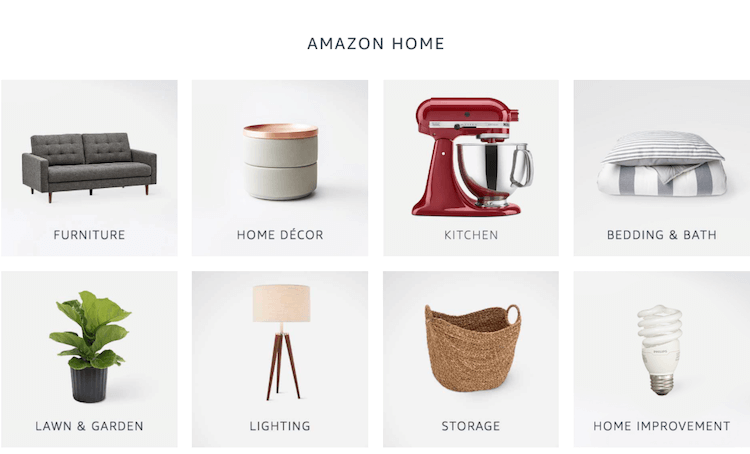When it comes to shopping, people with more money buy more products for higher prices. No surprises there.
But when it comes to shopping on Amazon, prices and brands may vary but access and customer experience are equalizers for consumers of different income levels.
So how does that affect consumer spending behavior, and has that changed with rising costs and inflation as more and more consumers are tightening their spending?
Jungle Scout conducted an anonymous survey of 1,000 U.S. consumers to learn about their buying preferences and spending behaviors in Q3 of 2023, to dig into these details and more…
Respondents ranged in age from 18 to 75+, and represented every U.S. state, all genders and employment types, and various levels of income.
- Amazon was, and still is, consumers’ favorite online store
- What is the most common shopping behavior among high-income consumers?
- Inflation still impacts consumers spending
- How income levels affect spending
- What products are consumers purchasing the most?
- Learn how consumers of different income levels spend
Note: Throughout the report, mentions of high-, middle-, or low-income consumers refer to the segments of survey respondents who self-identified their annual household incomes within ranges we’ve grouped into three categories: less than $50,000, between $50,000 and $99,000, and more than $100,000, respectively.
Amazon was, and still is, consumers’ favorite online store
Regardless of household income, 65% of survey respondents said Amazon is the online store they shop at most, though middle and high income earners are more likely to shop on Amazon than low income earners.
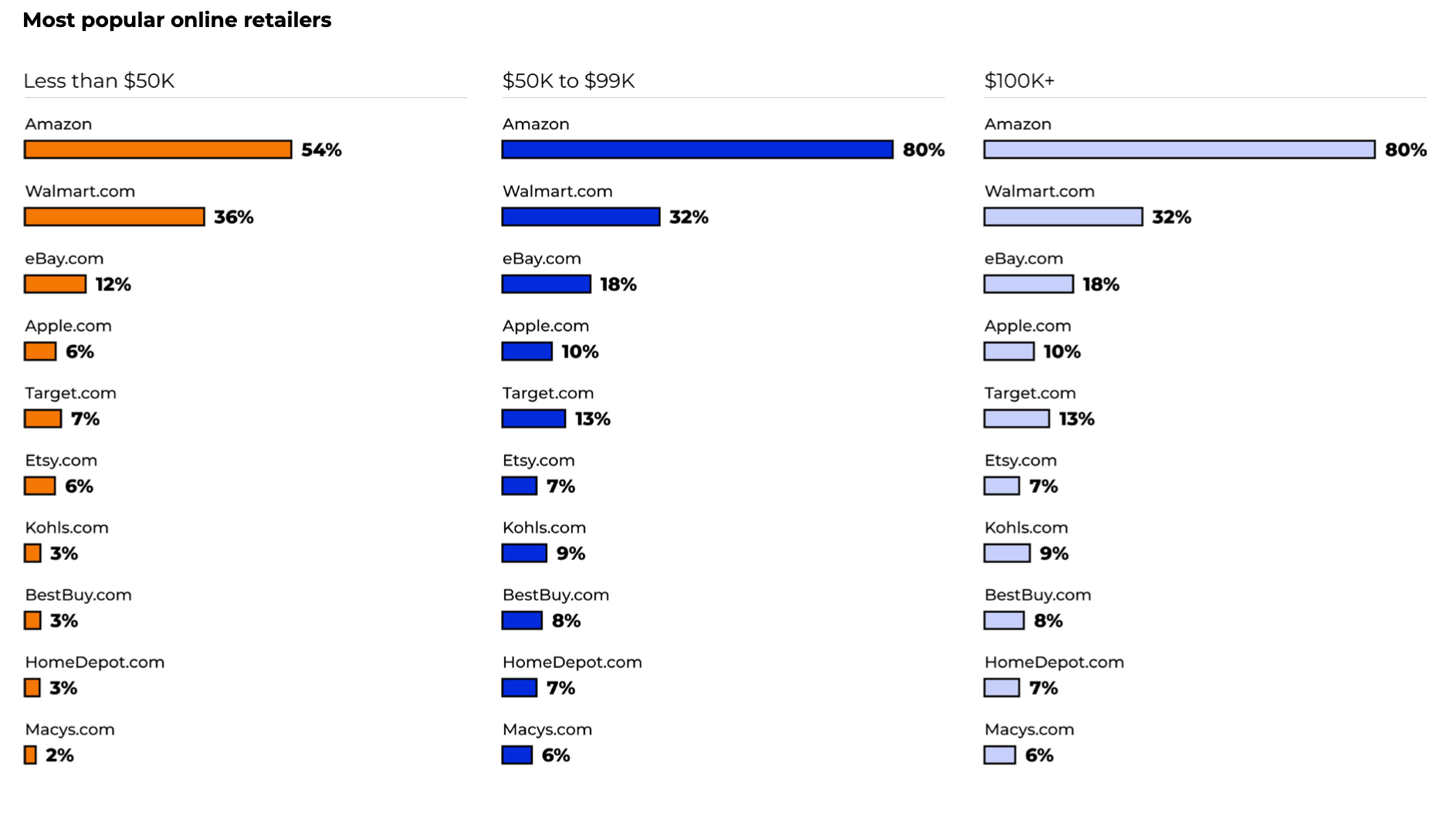
Low-income earners: Less than $50k
Middle-income earners: $50k to $99k
High-income earners: $100k+
The second and third most popular online stores are Walmart.com and eBay.com, respectively. Those who earn less than $50,000 per year, will shop on Walmart.com a little more than those earning a higher income.
Not every consumer shops exclusively online
While Amazon, Walmart.com, and eBay are among the top choices for online shopping, Walmart and Target remain number one and two, respectively, as the most popular brick and mortar retailers for in-store shopping, regardless of income levels.
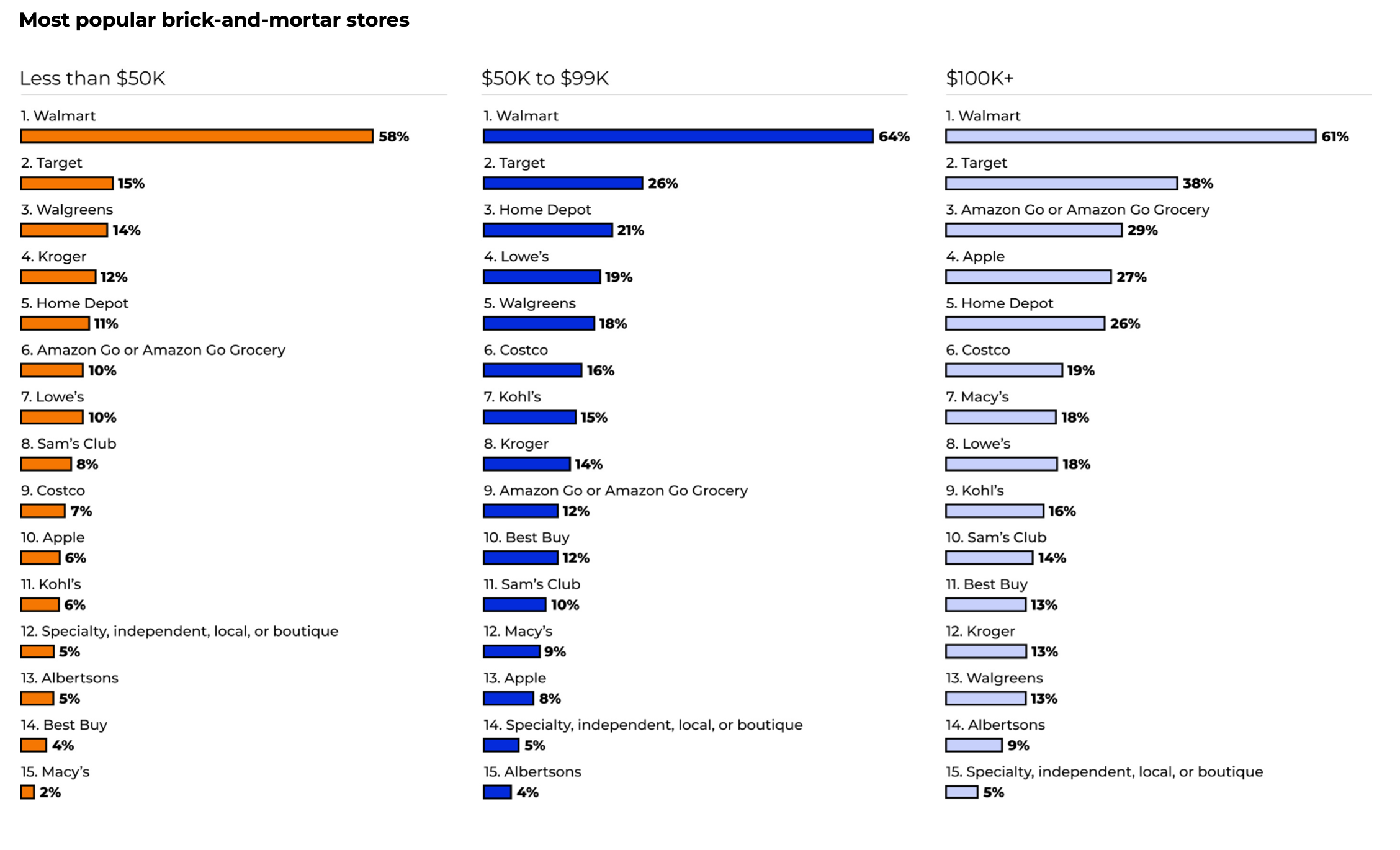
What is the most common shopping behavior among high-income consumers?
It is no surprise that higher-income households tend to have more flexible spending behaviors compared to lower income consumers. Let’s take a look at the most common shopping behavior among high-income consumers, and examine the factors that influence purchasing decisions.
1. Amazon badges
Consumers at a high-income level are generally more influenced by Amazon badges, such as the ‘Best Seller’, ‘Amazon’s Choice’, and the ‘Prime’ badge, than consumers with middle or low incomes, particularly badges intended to serve as ethical shopping indicators such as Climate Pledge Friendly.
50% of high-income consumers place a high level of importance on the Climate Pledge Friendly and Small Business badges when deciding which brand to purchase from — compared to just 23% of those with incomes under $50K per year.

2. Earlier holiday shopping
High-income shoppers are the most likely to start holiday shopping early, compared to low and middle income consumers. In fact, 44% started before September. 12% of consumers overall don’t plan to do any holiday shopping.
3. Increased overall spending
While inflation has affected consumers at all income levels, higher-income earners are the least worried about finances. 42% of high-income shoppers increased their spending in Q3 compared to Q2. 54% of them increased their online spending in Q3 compared to Q2.
4. Social media product searches
High-income shoppers are far more likely to begin their searches on social media sites. 41% of shoppers with annual household incomes above $100,000 a year turn to Facebook first when searching for a product. Search engines such as Google are the second most popular search method, after Amazon, for all income levels.
5. Shopping frequency
- 33% of high-income earners shop online at least once a day.
- 57% of consumers shop online at least once a week, regardless of income level.
- Only 8% of high-income earners shop online once a month or less.
Inflation still impacts consumers spending
Inflation has negatively impacted consumers from all income levels, especially those who earn less than $50k per year.
Overall, 79% of consumers say their spending was impacted by inflation in Q3. While that is still a relatively high percentage, it is lower compared to Q3 of 2022, when it peaked at 84%.
Here’s how consumers are feeling about inflation:
- 79% say inflation has affected their overall spending
- 66% are worried about their finances
- 47% say their household income is unstable
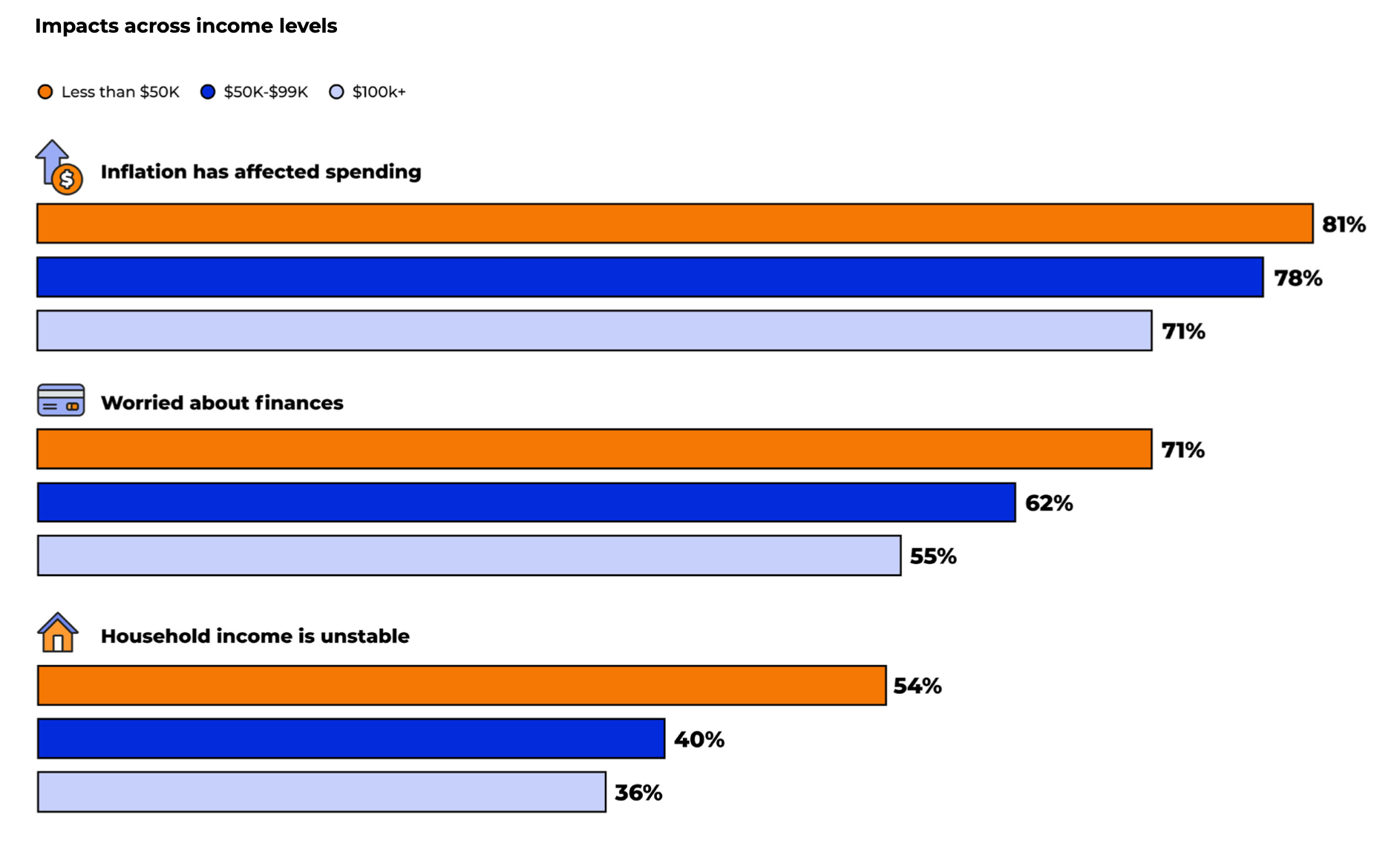
How income levels affect spending
Let’s also take a look at the overall spending habits of consumers at all income levels. Looking at the spending data by income level supports a common assumption that people with higher incomes are more likely to increase their spending over time.
Lower income earners were likely to see their overall spending decrease or stay the same compared to the previous quarter, and higher income earners were more likely to increase spending quarter-over-quarter.
- 41% of low-income earners have decreased their spending
- 50% of middle-income earners spending has stayed the same compared to previous quarters
- 42% of high-income earners have increased their spending
- 24% of low to middle-income earners have increased their spending online
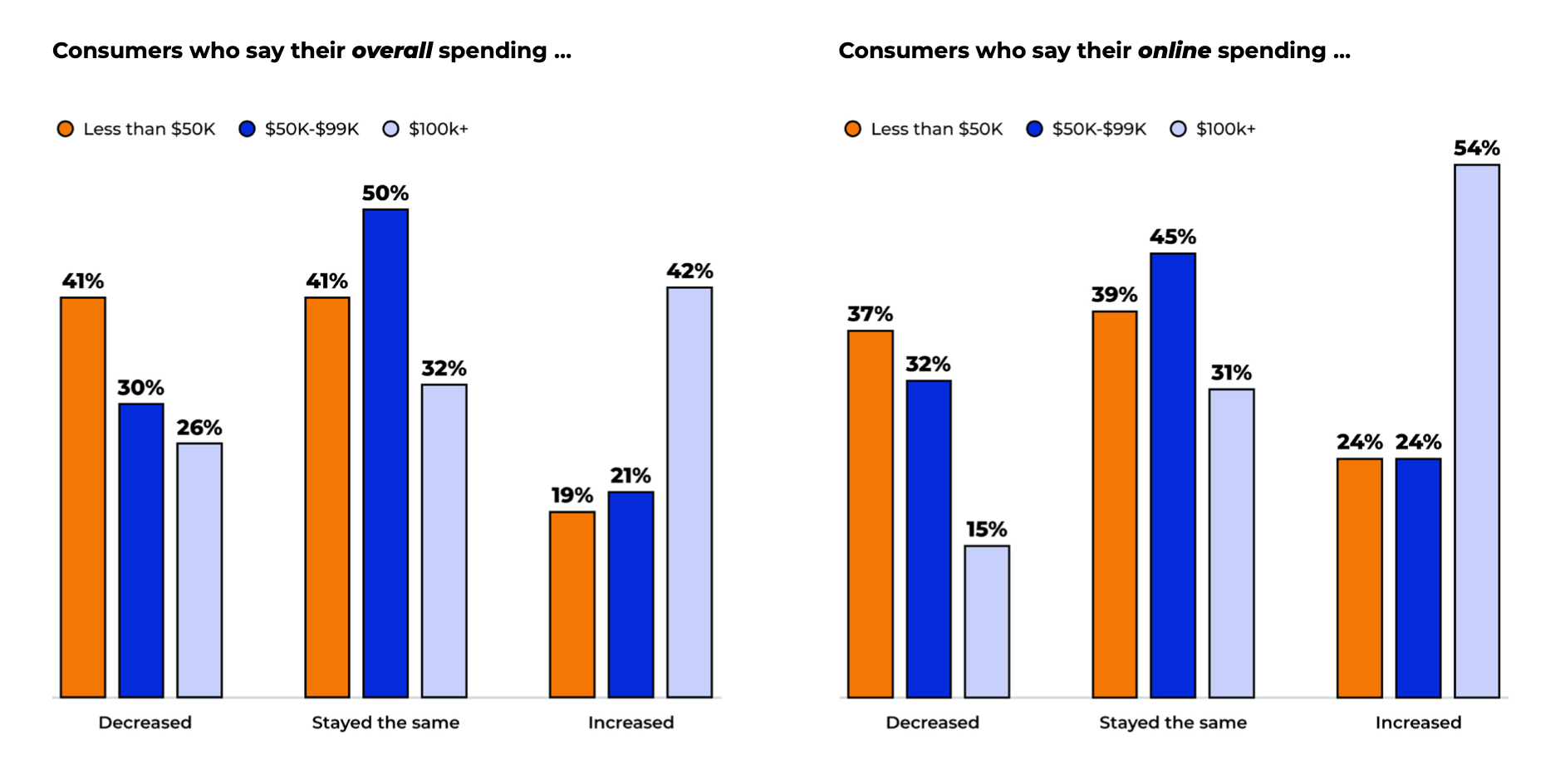
What products are consumers purchasing the most?
Comparing Q3 to Q2, consumers are pretty much buying the same amount of products across all categories, with some variances in seasonal categorized products.
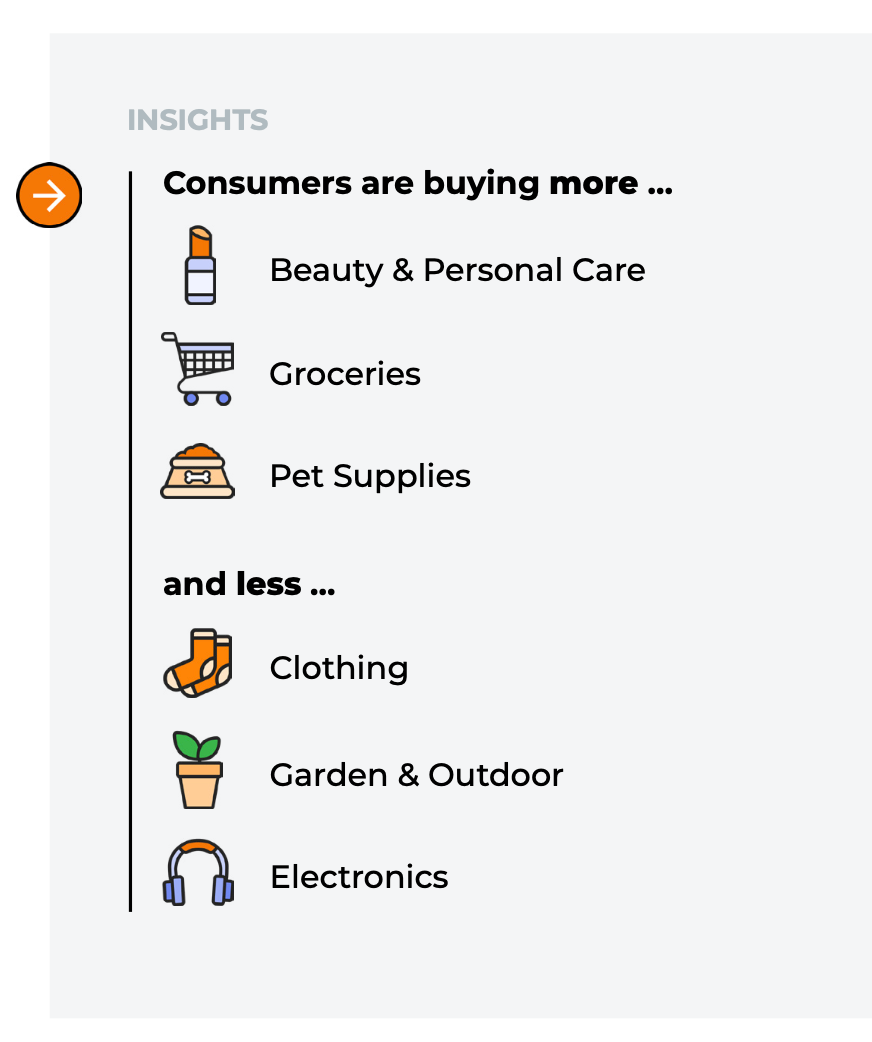
However, there are clear differences comparing these category trends across consumers of different income levels.
As we learned above, consumers with household incomes above $100K per year are, in general, spending more than consumers with lower household incomes. This trend is more noticeable in certain categories.
- 41% of consumers making more than $100K are buying more clothing in Q3 than they did in Q2
- Just 16% of consumers who make less than $50K are buying more clothing in Q3 than they did in Q2
- 39% of consumers making more than $100k are buying more beauty & personal care products, compared to 13% of consumers who earn less than $50k
- Consumers with higher incomes also spend more on their pets. 35% who earn over $100k are purchasing more pet supplies, compared to 16% of those who earn $50k or less, and 17% of those who earn between $50k and $99k
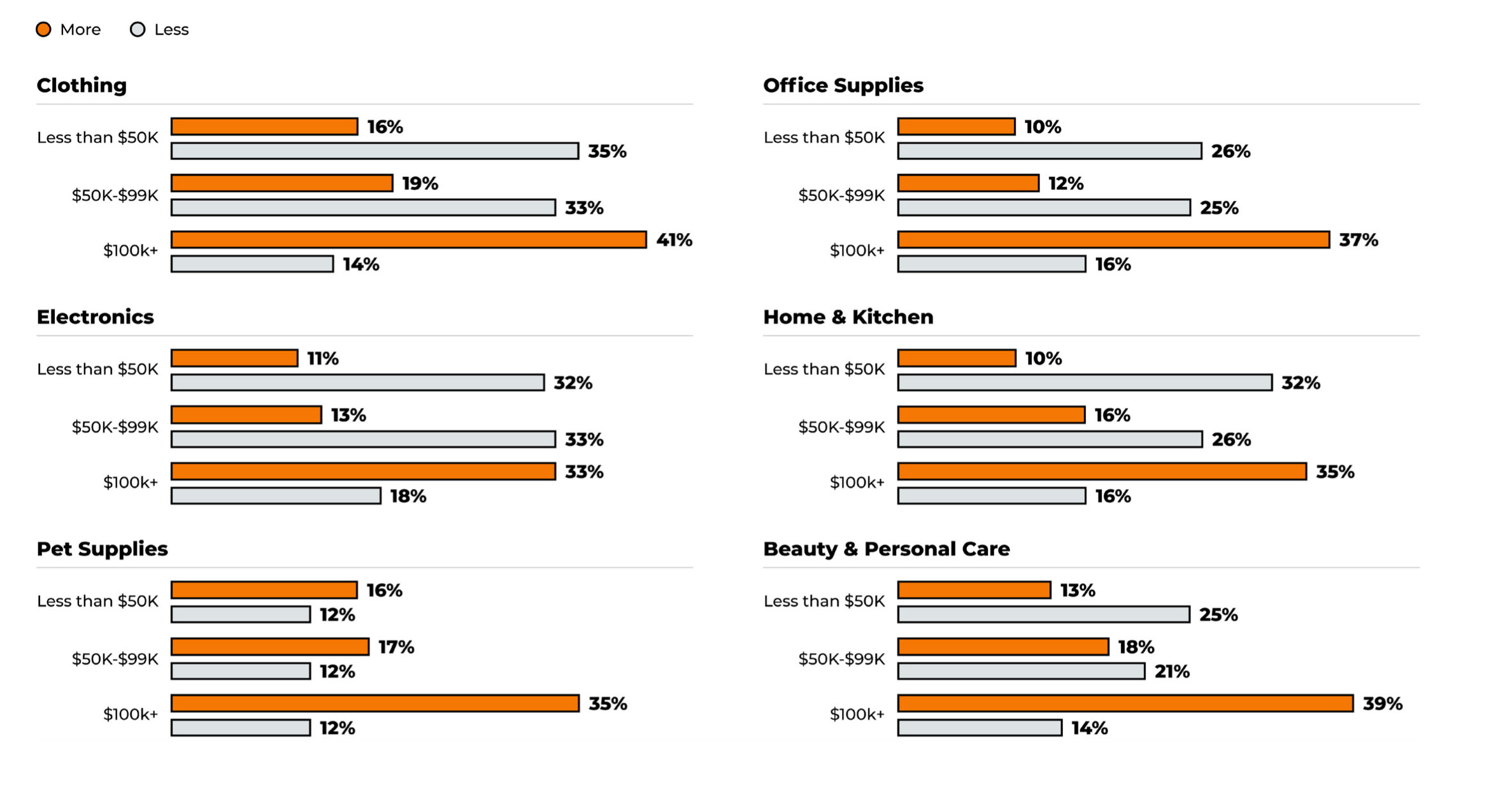
Learn how consumers of different income levels spend
Understanding consumer behaviors and spending habits based on income levels can help Amazon sellers tailor their marketing strategies towards the right market, offer products that are appealing to your intended market, and have an edge over competitors who may not be as attuned to their customer base.
To learn more about consumer behaviors and spending habits, read the full Q3 2023 Consumer Trends Report.
For more information about this article and Jungle Scout’s data, please contact [email protected].

 No Comments
No Comments